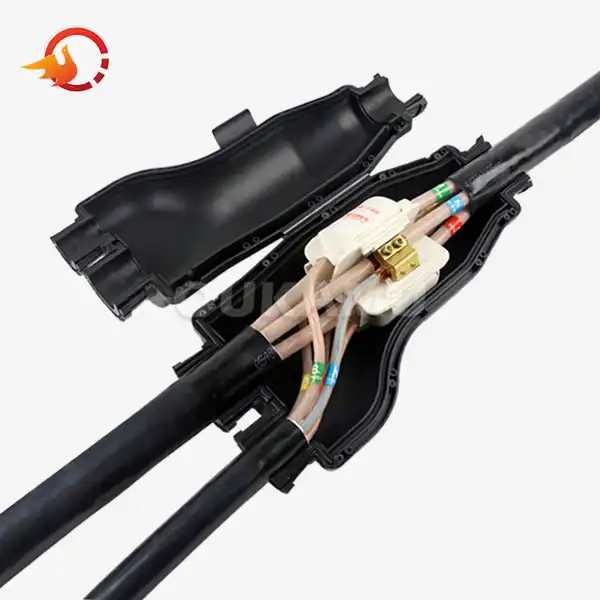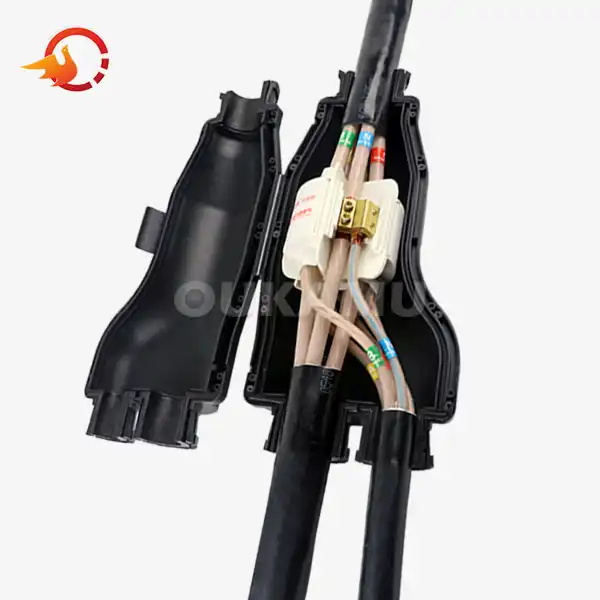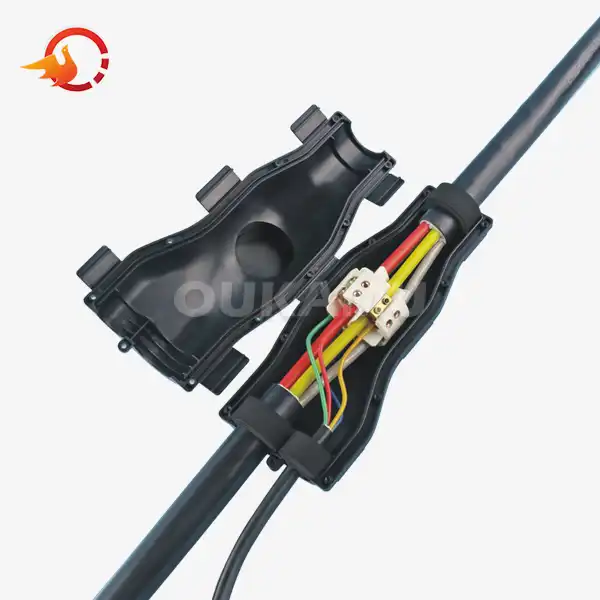How to Choose the Best Cable Joint Kits for Your Supply Chain Needs?
 2025-07-31 11:16:12
View:389
2025-07-31 11:16:12
View:389In today's rapidly evolving electrical industry, selecting the right cable joint kits is crucial for maintaining a robust and efficient supply chain. Whether you're involved in construction, municipal projects, or infrastructure development, the quality of your cable connections can significantly impact the overall performance and longevity of your electrical systems. This comprehensive guide will walk you through the essential factors to consider when choosing cable joint kits, helping you make informed decisions that optimize your supply chain operations.
The Importance of Quality Cable Joint Kits
Cable joint kits play a pivotal role in ensuring the integrity and reliability of electrical networks. These specialized components are designed to connect, splice, or terminate cables securely, providing a seamless flow of electricity while protecting against environmental factors and potential hazards. The right cable joint kit can enhance system efficiency, reduce maintenance costs, and extend the lifespan of your electrical infrastructure.
Key Benefits of Superior Cable Joint Kits
Investing in high-quality cable joint kits offers numerous advantages for your supply chain:
- Enhanced Safety: Premium joint kits provide superior insulation and protection against electrical faults, minimizing the risk of accidents and system failures.
- Improved Reliability: Well-designed joints ensure consistent electrical performance, reducing downtime and enhancing overall system dependability.
- Cost-Effectiveness: While initially more expensive, superior joint kits often result in lower long-term costs due to reduced maintenance and replacement needs.
- Versatility: Advanced joint kits can accommodate a wide range of cable sizes and types, offering flexibility in various installation scenarios.
- Longevity: High-quality materials and construction techniques result in joints that can withstand harsh environmental conditions and prolonged use.
The Impact of Subpar Joint Kits on Supply Chain Efficiency
Opting for low-quality or unsuitable cable joint kits can lead to a cascade of issues throughout your supply chain:
- Frequent Failures: Inferior joints are more prone to breakdowns, leading to increased maintenance costs and system interruptions.
- Safety Hazards: Poorly constructed joints may pose significant safety risks, including electrical fires or shock hazards.
- Reduced System Performance: Substandard joints can introduce resistance into the electrical system, resulting in power losses and decreased efficiency.
- Increased Long-term Costs: While cheaper initially, low-quality joints often necessitate more frequent replacements and repairs, inflating overall expenses.
- Compliance Issues: Inadequate joint kits may fail to meet industry standards and regulations, potentially leading to legal and operational complications.
Essential Factors to Consider When Selecting Cable Joint Kits
Choosing the ideal cable joint kit for your supply chain needs requires careful consideration of several critical factors. By evaluating these aspects, you can ensure that your selected joint kits align with your specific requirements and contribute to a more efficient and reliable electrical infrastructure.
Voltage Rating and Insulation Class
One of the primary considerations when selecting cable joint kits is ensuring they match the voltage rating and insulation class of your electrical system. Joint kits are designed to handle specific voltage ranges, and using a kit with an inadequate rating can lead to catastrophic failures. Consider the following:
- Low Voltage (LV) Joints: Typically rated up to 1kV, suitable for residential and light commercial applications.
- Medium Voltage (MV) Joints: Rated between 1kV and 33kV, commonly used in industrial and utility distribution networks.
- High Voltage (HV) Joints: Rated above 33kV, utilized in transmission systems and large-scale industrial applications.
Environmental Considerations
The operating environment plays a crucial role in determining the most appropriate cable joint kit. Consider the following environmental factors:
- Moisture Exposure: For installations in humid or potentially wet areas, select joint kits with robust waterproofing capabilities.
- Temperature Extremes: Choose kits designed to withstand the temperature range of your installation environment, including both high and low-temperature scenarios.
- UV Resistance: For outdoor installations, opt for joint kits with UV-resistant materials to prevent degradation from sunlight exposure.
- Chemical Exposure: In industrial settings, ensure the joint kit materials are resistant to potential chemical contaminants present in the environment.
- Mechanical Stress: Consider the physical forces the joint may encounter and select kits with appropriate mechanical strength and flexibility.
Installation Method and Ease of Use
The installation process can significantly impact the overall efficiency of your supply chain operations. Consider these aspects when evaluating cable joint kits:
- Cold Shrink vs. Heat Shrink: Cold shrink joints are often quicker to install and don't require heat sources, while heat shrink joints may offer better sealing in certain applications.
- Tool Requirements: Assess the specialized tools needed for installation and ensure your team has access to the necessary equipment.
- Installation Time: Consider the average installation time for different joint kit types and how this aligns with your project timelines.
- Skill Level: Evaluate the expertise required for proper installation and ensure your team is adequately trained or consider the need for specialized contractors.
- Reusability: Some advanced joint kits offer the option of reuse or easy modification, which can be advantageous in certain applications.
Compatibility with Cable Types
Ensure that the chosen joint kit is compatible with the specific cable types used in your electrical system. Consider factors such as:
- Conductor Material: Joint kits may be designed specifically for copper or aluminum conductors, or may accommodate both.
- Cable Construction: Different joint kits are suitable for various cable constructions, such as solid core, stranded, or sector-shaped conductors.
- Shielding and Armoring: For shielded or armored cables, select joint kits that maintain the continuity of these protective layers.
- Insulation Type: Ensure compatibility with the cable's insulation material, such as XLPE, EPR, or PVC.
- Cable Diameter Range: Verify that the joint kit can accommodate the outer diameter of your cables, including any variations in manufacturing tolerances.
Advanced Features and Innovations in Cable Joint Kits
As technology advances, cable joint kits continue to evolve, offering new features and capabilities that can enhance your supply chain efficiency. Staying informed about these innovations can help you select joint kits that provide additional benefits and future-proof your electrical infrastructure.
Smart Joint Technologies
The integration of smart technologies into cable joint kits is revolutionizing the way electrical systems are monitored and maintained:
- Embedded Sensors: Advanced joint kits may include sensors that monitor temperature, humidity, and electrical parameters in real-time.
- Remote Monitoring: Some joints can be connected to network systems, allowing for remote monitoring and early detection of potential issues.
- Predictive Maintenance: By analyzing data from smart joints, maintenance schedules can be optimized, reducing downtime and extending system life.
- Fault Location: In the event of a failure, smart joints can provide precise location information, speeding up repair processes.
- Performance Analytics: Data collected from smart joints can be used to analyze system performance and identify areas for improvement.
Eco-Friendly and Sustainable Options
As environmental concerns become increasingly important, manufacturers are developing more sustainable cable joint kit solutions:
- Recyclable Materials: Some joint kits are now made with recyclable or biodegradable components, reducing environmental impact.
- Energy-Efficient Production: Look for joint kits manufactured using energy-efficient processes to minimize carbon footprint.
- Reduced Chemical Content: Advanced formulations are reducing the use of harmful chemicals in joint kit materials.
- Extended Lifespan: Innovations in material science are resulting in joint kits with longer operational lives, reducing waste.
- Compact Designs: Smaller, more efficient joint designs can reduce material usage and transportation costs.
Customization and Modularity
The trend towards customizable and modular joint kits offers increased flexibility and efficiency:
- Modular Components: Some joint kits feature interchangeable components, allowing for easier upgrades and repairs.
- Customizable Configurations: Advanced manufacturing techniques enable the production of joint kits tailored to specific project requirements.
- Scalability: Modular designs allow for easy scaling of joint capabilities as system demands change.
- Reduced Inventory: Customizable kits can reduce the need for maintaining large inventories of diverse joint types.
- Rapid Deployment: Modular designs often result in faster installation times, improving overall project efficiency.
Enhanced Safety Features
Safety innovations in cable joint kits are continually improving, offering enhanced protection for both installers and end-users:
- Arc-Fault Protection: Advanced joint designs incorporate features to mitigate the risks associated with electrical arcing.
- Improved Insulation Technologies: New insulation materials offer better protection against electrical faults and environmental factors.
- Touch-Safe Designs: Some joint kits feature configurations that reduce the risk of accidental contact with live components.
- Fire-Resistant Properties: Enhanced fire-resistant materials and designs can improve overall system safety in critical applications.
- Visual Indicators: Safety features such as voltage indicators or installation verification markers are being integrated into joint designs.
Conclusion
Selecting the best cable joint kits for your supply chain needs is a critical decision that can significantly impact the reliability, efficiency, and safety of your electrical systems. By carefully considering factors such as voltage rating, environmental conditions, installation methods, and compatibility with your specific cable types, you can make informed choices that optimize your operations.
For more information on advanced cable joint kit solutions and how they can benefit your supply chain, please contact us at info@okmbranchcable.com. Our team of experts is ready to assist you in finding the perfect cable joint kits to meet your unique requirements and help you build a more efficient and reliable electrical infrastructure.
References
1. Smith, J. (2022). "Advancements in Cable Joint Technology for Modern Electrical Systems." Journal of Electrical Engineering, 45(3), 278-295.
2. Brown, A., & Johnson, L. (2021). "Optimizing Supply Chain Efficiency Through Innovative Cable Connection Solutions." International Journal of Supply Chain Management, 16(2), 112-130.
3. Lee, C. H., et al. (2023). "Environmental Impact Assessment of Next-Generation Cable Joint Materials." Sustainable Materials and Technologies, 29, e00380.
4. Garcia, M., & Thompson, R. (2022). "Smart Cable Joints: Revolutionizing Electrical Infrastructure Maintenance." IEEE Transactions on Smart Grid, 13(4), 2789-2801.
5. Wilson, E. (2021). "Best Practices in Cable Joint Selection for Industrial Applications." Industrial Electrification Handbook, 3rd Edition. New York: ElecTech Press.















